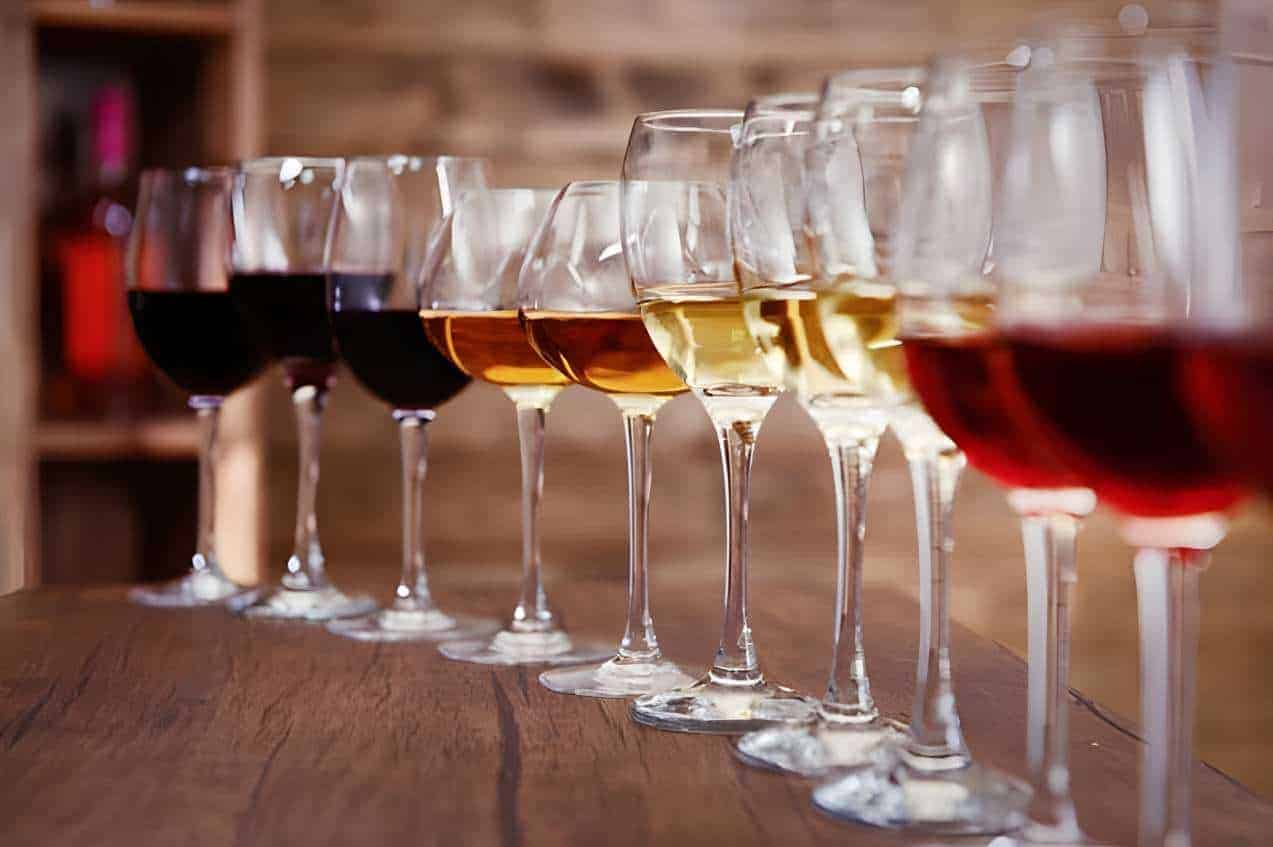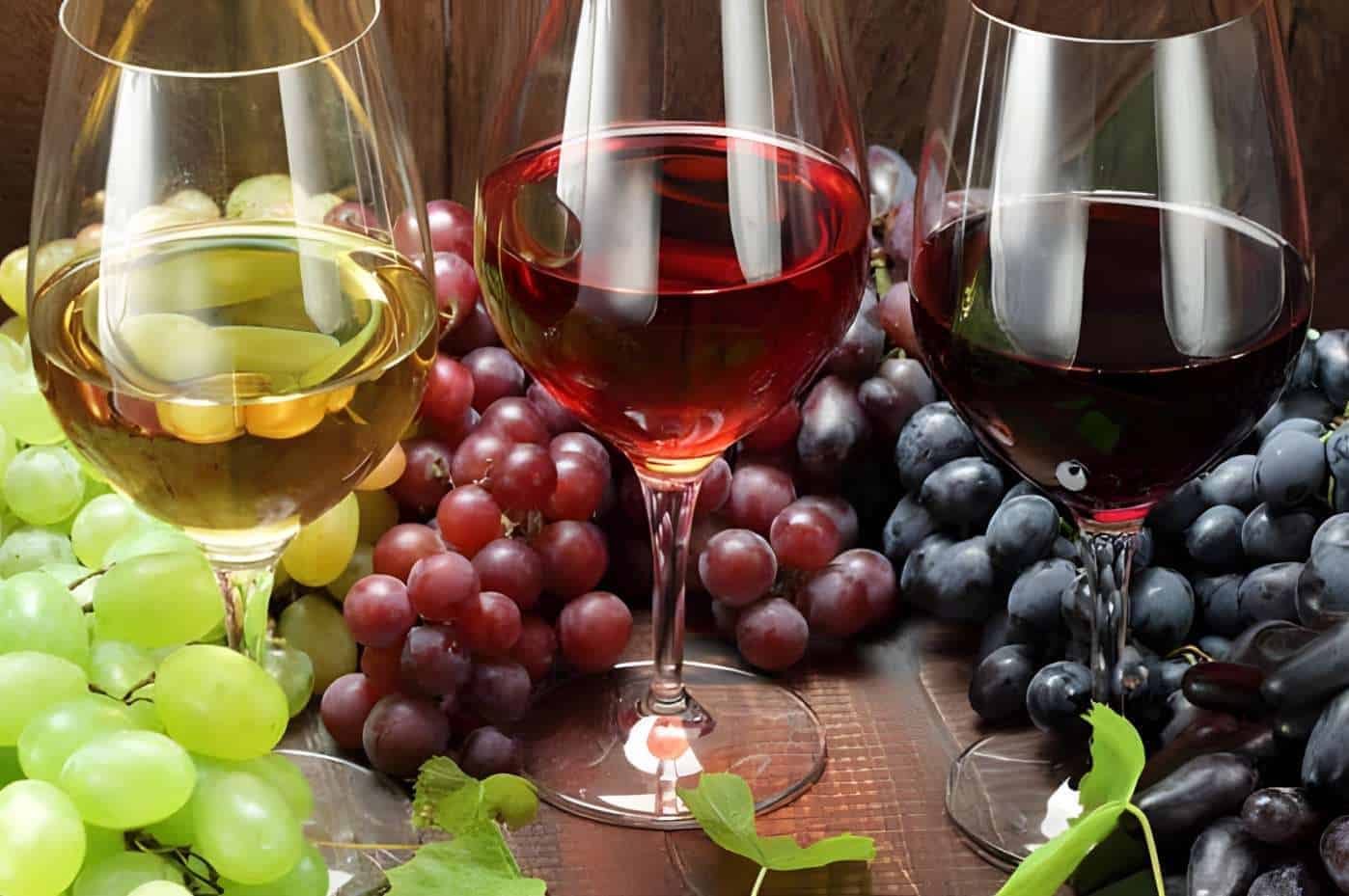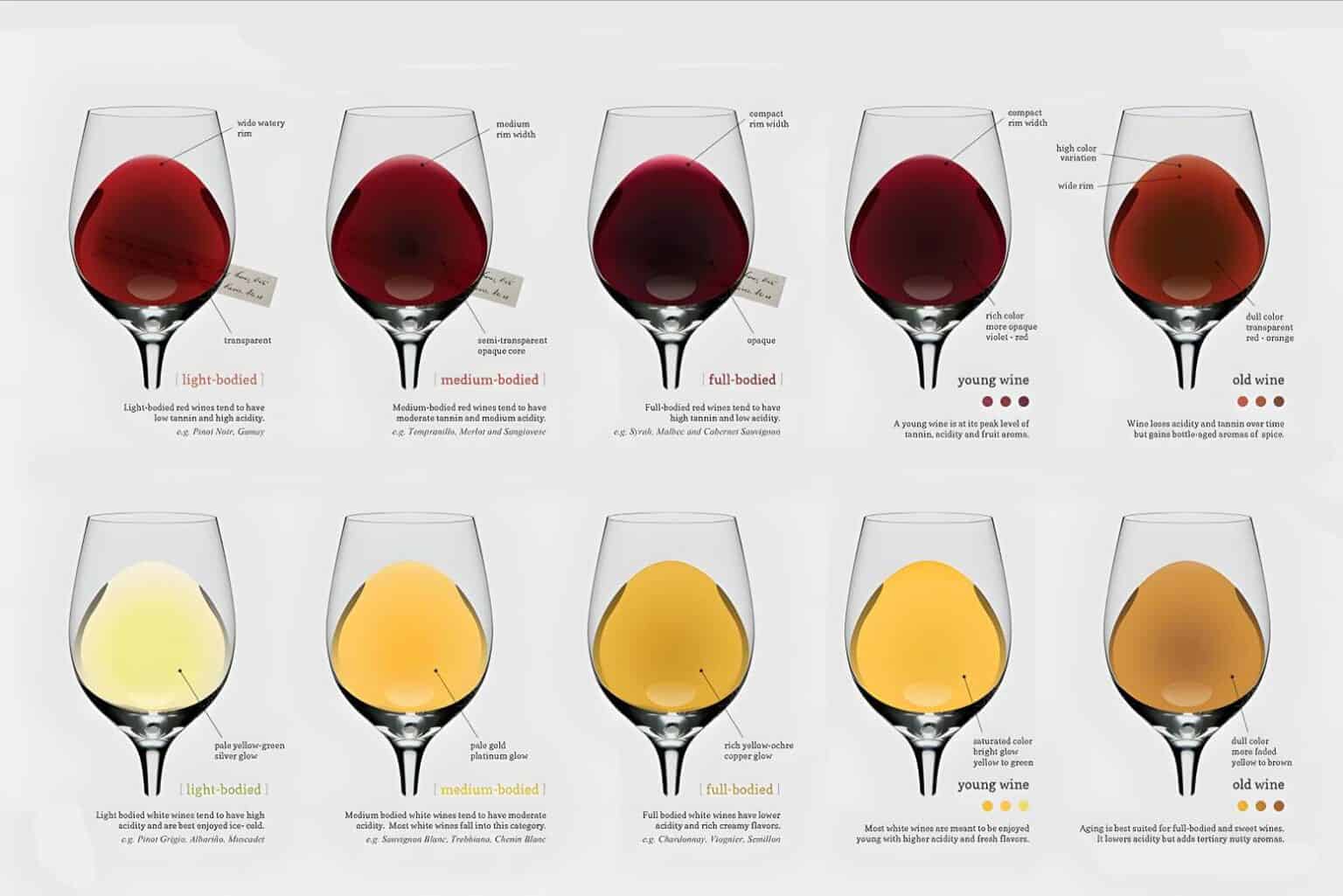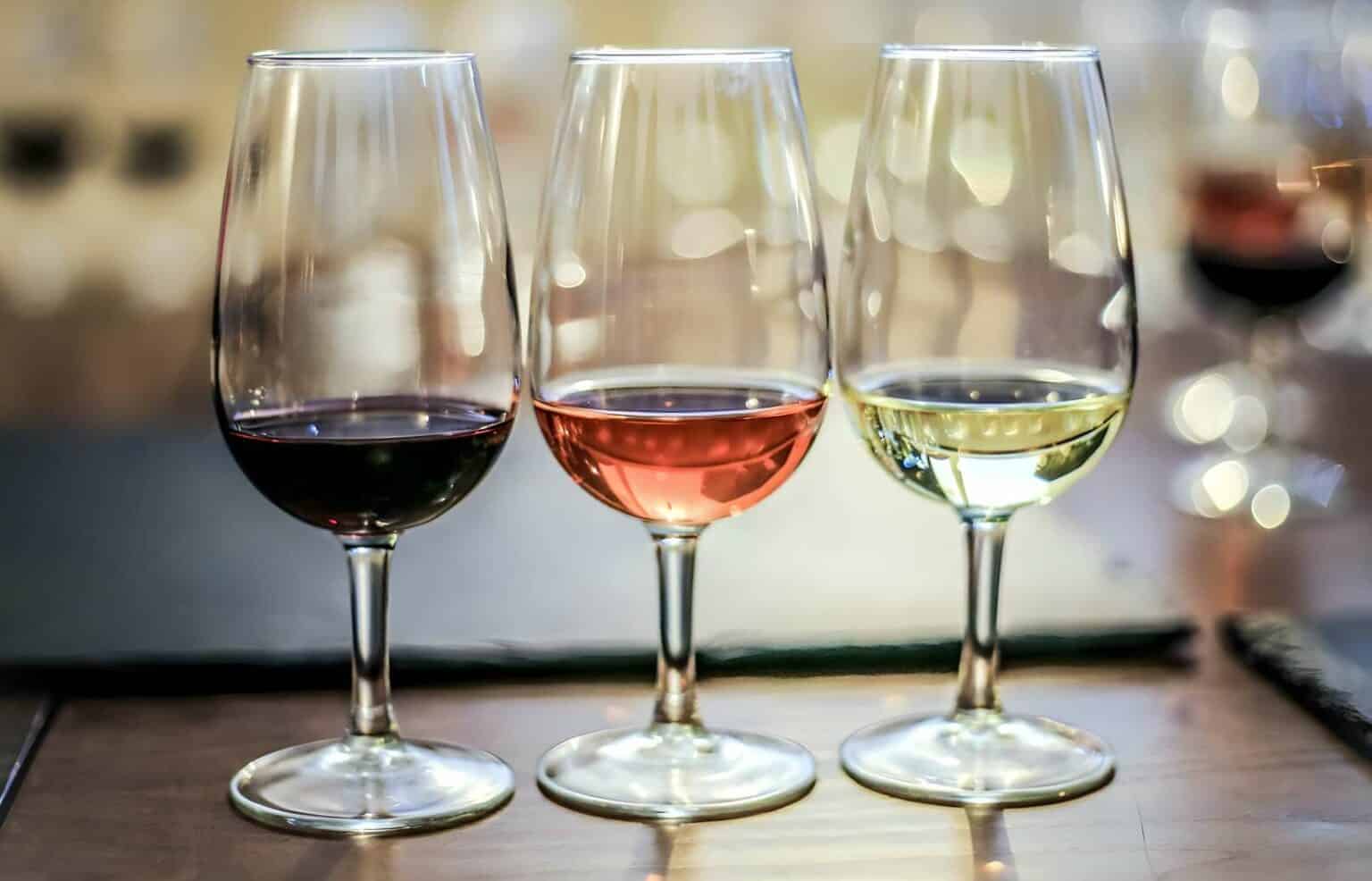You might be asking, “What are the different colors of wine?” As you may have already learned, many types of wine are available worldwide. And so, it’s not just one or two colors; a spectrum of shades corresponds to each type. Here’s an easy guide for starters.
The Story Behind Wine Colors
There are different shades of wine, but it is usually not the first thing a person would examine. Looking at a bottle of wine, its appearance may or may not be the first thing people notice or discuss. Wine color, however, is far more complex than it first appears.
As you may have already guessed, the color and type of wine highly depend on what kind of grape is used to create it. There are several things a wine color can reveal, including the type of grape used, location, and age.
Learning about wine colors can be a game changer, especially when interested in winery. Winemakers can make decisions that impact the wine’s consistency, texture, and lifespan by getting to know colors more in-depth. They consider the role that color plays in wine at each stage of the production process.

Grape color and survival
Plants have their way of maximizing their characteristics to survive, multiply, and ward off danger. The color of the berries produced by the grapevine is a significant factor in the plant’s ability to endure the rigors of evolutionary change.
While many plants have distinct colors that might be a technique to ward off animals and for protection, the pigments in berries have the opposite role. Grape colors are purposefully designed to entice animals to consume them.
Multiplication
For grapes, the color also indicates the capability of its seed to pollinate. Their colors only turn red when their seeds become ready for pollination or to multiply. And so, as they turn red, it serves as a signal for animals to consume them.
The darker colors in grapes are also attractive to animals, so they are inclined to eat grapes of these colors while contributing to pollination.
White Grapes
These grapes are rare and call for two separate mutations for them to develop. Because of their light color, it’s hard to attract animals to consume them even when their seeds are already viable. And so, white grapes are at a considerable disadvantage in evolution and spreading their seeds.
Wine Colors and Nature

The grape variety is not the only factor in the wine’s color. There are other essential factors you need to consider as there are processes before the wine reaches your table.
Grape variation and environment (terroir)
Many people may not know, but these are some of the most significant factors regarding wine color. Every variety of wine grape has pigments. For example, grapes that are used to make red wine include anthocyanin chemicals.
These chemicals are responsible for the wine’s characteristic deep purple hue. On the other hand, grapes used for white wines contain flavonoids responsible for their golden shades.
Ph Levels
pH level can be thought of as a measurement of the relative strength of the wine’s acidity in comparison to its relative alkalinity. When pH levels are low, the wine is lighter. And so, higher pH levels equate to wine with darker shades. High pH levels also mean high acidity, tannin, and aging potential.
Pulp
Grape pulps are usually clear or transparent. This is why there are white wines made from grapes with darker colors. There is also naturally red grape pulp, but these variations are relatively rare and depend on natural mutation.
Skin thickness
Grape variations with thicker skins contribute more color to the wine. This means that grape types with thinner skins give less color. Additionally, the environment is extensively involved in the grape’s skin thickness.
Specifically, the weather or climate the vineyard is exposed to. Warmer temperatures bring about grapes with thicker skins as the plant’s way of defense from the heat.
The Wine Spectrum of Colors

Each hue of wine conveys different information about the beverage you are about to consume. While there are various shades of wine color, there is a more general umbrella of color you can categorize them into.
The more prominent categories of wine colors are white, yellow, pink, orange, and red. By looking at the wine’s color, you can get basic info like the tannin level, sweetness, acidity, and even its complete flavor profile.
Red Wine Colors:
| Shade | Body | Style | Tannins | Aging | Examples |
| Purple
|
Light to Medium | Fruity
Juicy |
Low to Medium | Young and most of the time, unaged | Gamay, Pinotage, Young Malbec |
| Ruby
|
Light to Full | Dark-colored berry flavor with a hint of spice | Low to High | Young
Under four years old |
Grenache, Merlot |
| Garnet
|
Medium to Full | Savory with spice | Medium to Full body | Oak Aged | Nebbiolo, aged Cabernet Sauvignon |
| Tawny
|
Soft (by age) | Sweet and smoky | Mild and softened (by age) | Oak aged (Long durations) | Tawny Port |
Pink Wine Colors
| Shade | Body | Style | Acidity | Aging | Examples |
| Pale Pink | Light | Fresh | High | None | |
| Deep Pink | Light to Medium | Juicy, sweet, and Fruity | Medium | None | Grenache Rose |
| Salmon | Light to Medium | Fragrant and dry | Medium | None | Pinot Noir Rose |
Yellow Wine Colors
| Shade | Body | Style | Acidity | Aging | Examples |
| Lemon Green | Light | Herbaceous, crisp, and floral | Medium to High | None | Sauvignon Blanc, Gruner Veltliner |
| Lemon
|
Light to Medium | Aromatic, dry, and zesty | Medium to High | None | Vihno Verde, Macabeo, |
| Gold | Medium to Full | Rich | Medium | Dependent on variety | Oaked Chardonnay, Viognier |
| Amber | Medium to Full | Nutty and sweet | Low | Usually in Oak | Amontillado Sherry |
Wine Colors and The Processes Behind Them
Apart from the natural elements of wine and how their colors came to be, they also undergo more processes that contribute to the change in wine color. The color intensities during the wine creation process differ according to three main factors.
- Maceration – Maceration is the leaching process the phenolic elements of the grape undergo. It is the initial phase of fermentation. Typically, the best period for maceration is eight days. This duration is ideal for achieving the best color extraction. Prolonging the process to more than the ideal time frame will result in less vibrant hues.
- Fermentation – The majority of the volatile chemicals created during alcoholic fermentation are what give the wine its distinctive scent and flavor. If you ferment wine along with entire grape bunches, the richness of the wine’s color may be diminished.
- Techniques – Before starting the fermentation process, the winemaker can increase the amount of co-pigmentation. They can do this by employing cold maceration or one of the other many ways.
Aging
During the aging process, the degrees of oxidation in the wine play a role in determining the color of the wine. There are two significant ways of aging and storing wine: oak barrels and stainless steel tanks.
Having no oxygen in the stainless steel tank, the environment fosters an atmosphere conducive to the reductionist aging of wine. Because of this, the freshness, fruitiness, and, most significantly, the color of the wine are preserved. On the other hand, an oak barrel’s oxidative atmosphere could cause a slightly paler tint.
Examining Wine Colors: What to Look For

Colors are complex, and so is wine. And so, if you are interested in a specific type of wine, you might need to be knowledgeable about its characteristics. This means you would need to take a closer look at its features, especially its color.
Intensity
In examining your wine, first and foremost, you might want to look at how intense the color is. By looking at this feature, you may determine whether the wine has a lighter or denser style.
Wines with deeper colors are typically stronger in flavor and have a higher concentration of tannins. The darkness of the hue is usually directly proportional to the length of time the grape skins are in contact with the juice.
Opacity
Your next consideration should be the wine’s degree of transparency or opaqueness. The opacity reveals both the grape variation and the wine’s age. Can you see well through it, or does it prevent light from passing through it?
Color
If you wish to know the ‘main’ color of a wine, you look at its center. The richness of the hue can be used to estimate the age of the wine. If a wine is made to age, it will take 10 to 14 years before the color starts shifting.
Secondary hues
Primary colors have hints of secondary colors, visible as you enjoy your wine. You may find the secondary hues at the rim and moving closer to the edge.
Rim variants
Wide rim variation can suggest an older wine. A faint blue coloration indicates that the wine has a greater acidity.
Summary
What are the different colors of wine? The answer is more complex than expected, but it’s valuable knowledge for those who enjoy examining wine. It might be a bland topic at first, but as you get to know them, it becomes more enjoyable! Wine is indeed a fun drink to enjoy and learn about.

George Moore, co-founder of Wine Flavor Guru, is a charismatic entrepreneur with a rich background in California’s wine industry. Alongside Sylvia, he transformed a Sonoma County vineyard into a source of premium wines. George’s expertise in sourcing exceptional grapes and his approachable style make wine appreciation both accessible and engaging.
